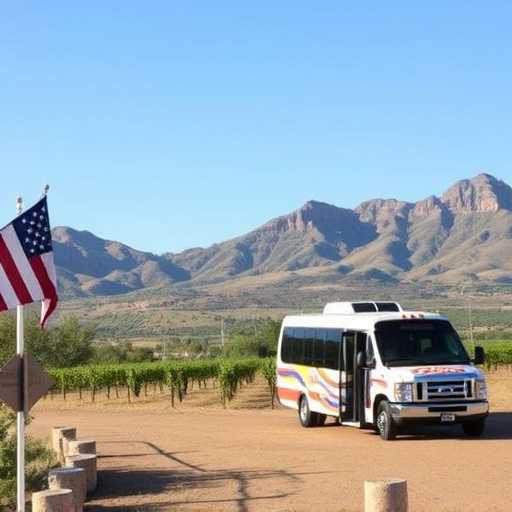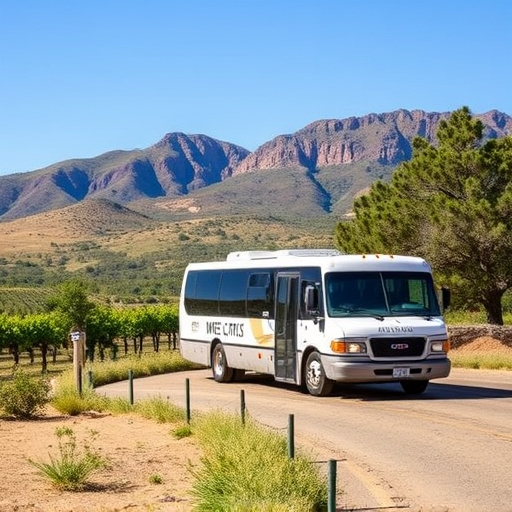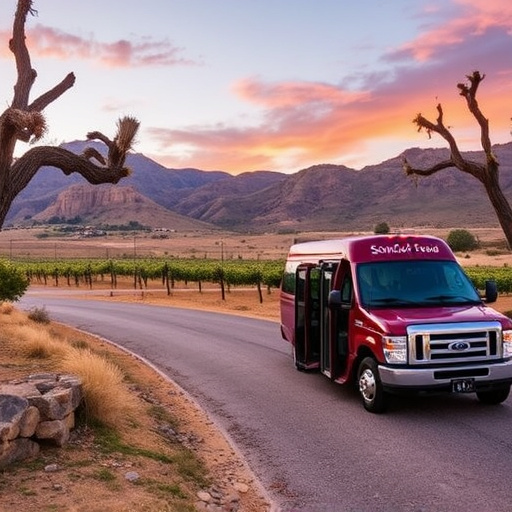The Sonoita High Desert Wine Region, a beautiful yet fragile ecosystem in Arizona, faces environmental threats from traditional transportation methods used by wine tourists. To combat this, adopting eco-friendly solutions like climate-smart sonoita wine tour shuttles is essential. By transitioning to greener transport options, the region can reduce carbon emissions, mitigate ecological disruption, and provide sustainable travel experiences while attracting visitors interested in its renowned wines and natural beauty, ensuring its preservation for future generations.
“Experience the enchanting Sonoita High Desert Wine Region with a climate-smart approach! This article explores the transformative potential of implementing an eco-friendly shuttle transit system for wine tours. With traditional transportation methods facing environmental challenges, a dedicated shuttle service offers a sustainable solution. Discover how this initiative benefits tourists, local businesses, and the delicate ecosystem, while reducing carbon emissions and enhancing the overall visitor experience. Elevate your journey with a Sonoita wine tour shuttle.”
- The Need for Climate-Smart Transportation in the Sonoita Wine Region
- – Exploring the environmental challenges of traditional transit systems
The Need for Climate-Smart Transportation in the Sonoita Wine Region
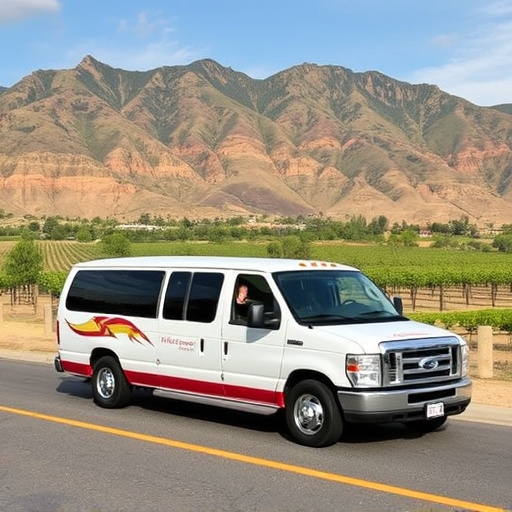
The unique and enchanting Sonoita High Desert Wine Region, nestled in southeastern Arizona, has long been a gem for wine enthusiasts seeking picturesque landscapes and exceptional vintages. However, as climate change intensifies, this delicate ecosystem and the region’s thriving wine industry face significant challenges. The need for climate-smart transportation in this area is more urgent than ever, especially when considering the growing number of visitors eager to explore the various vineyards and enjoy guided sonoita wine tour shuttles.
Traditional modes of transport contribute to carbon emissions, exacerbating local environmental issues. To preserve the region’s natural beauty and ensure its sustainability for future generations, adopting eco-friendly transportation solutions is essential. By implementing climate-smart shuttle services tailored to the specific needs of wine tour operators and visitors, the Sonoita Wine Region can offer a reduced-impact travel experience while promoting responsible tourism practices.
– Exploring the environmental challenges of traditional transit systems
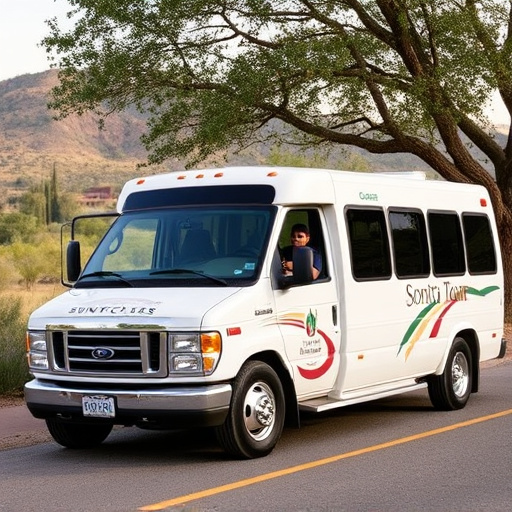
Traditional transit systems, while essential for connecting communities, often present significant environmental challenges in sensitive regions like Sonoita’s High Desert Wine Region. The heavy reliance on fossil fuels contributes to greenhouse gas emissions, exacerbating climate change impacts. Additionally, traffic congestion and infrastructure development can disrupt ecological balance, impacting wildlife habitats and scenic landscapes that are integral to the area’s unique character.
For instance, a typical wine tour shuttle in Sonoita would face difficulties navigating through these environmental constraints. The region’s arid terrain and scattered population centers necessitate extensive road networks, increasing carbon footprints due to prolonged travel times and higher fuel consumption. Therefore, exploring climate-smart alternatives is crucial for preserving the region’s natural beauty while facilitating sustainable tourism experiences for visitors interested in exploring Sonoita’s renowned wine offerings.
In conclusion, implementing a climate-smart shuttle transit system for the Sonoita High Desert Wine Region is a significant step towards sustainable tourism. By addressing the environmental impact of traditional transportation, this innovative approach ensures that visitors can enjoy the scenic beauty and renowned wines of Sonoita while minimizing their carbon footprint. A well-designed wine tour shuttle service, utilizing electric or low-emission vehicles, can offer efficient and eco-conscious mobility, fostering a harmonious relationship between the region’s vibrant ecosystem and its thriving wine industry.

